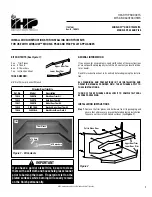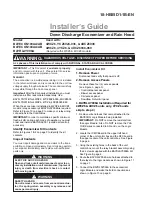
TK 61555-2-MM-EN
29
Electrical Maintenance
Alternator Diagnostic Procedures
General Information
Poor charging performance may not be caused by a bad alternator. The following conditions can
cause improper battery charging, even with a good alternator (See Service Bulletin T&T 388 for
more information):
•
A problem may exist in the 2A output circuit from the alternator to the base controller or in
the 2 circuit from the base controller to the battery. Check for an open 2 or 2A circuits, fuses
FS8 and FS10 if used, loose connections, defective battery cables, or dirty battery terminals.
•
The battery must be in good condition and capable of accepting a charge. Check for a
damaged battery, correct electrolyte level, and loose or corroded connections.
•
The alternator charging output will be low if the alternator belt or pulleys are defective or the
belt is not properly adjusted. Verify the belt is not loose or cracked and the pulleys are the
correct size and in good condition.
•
The excitation circuit (EXC circuit) must supply voltage to the excite terminal of the
alternator.
•
The sense circuit (2Y circuit) must supply voltage to the sense terminal of the alternator.
•
The alternator must be properly grounded.
•
The unit control circuits or installed accessories may be drawing excessive current.
•
An overcharged battery is usually caused by a defective voltage regulator.
Alternator Identification
These units use Thermo King Alternators (
), which are painted black.
















































